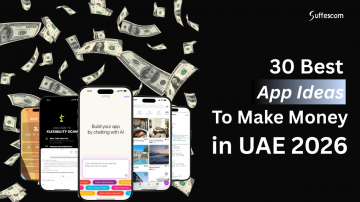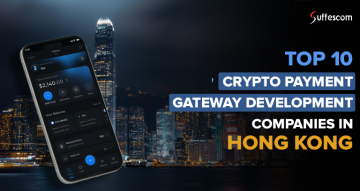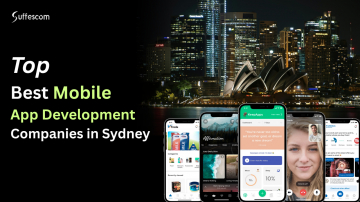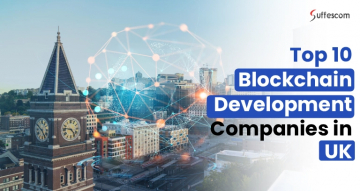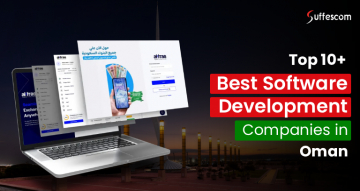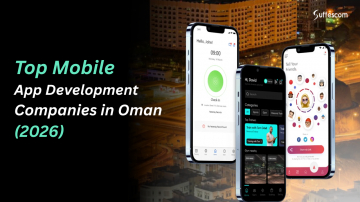How to Develop a Shein Like App: A Complete Guide (2025)
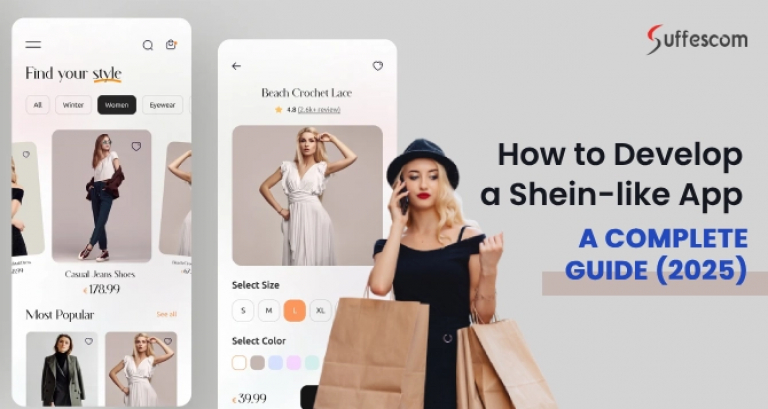
In the ever-evolving world of fashion e-commerce, Shein has emerged as a global disruptor. With its efficient supply, low prices, and a mobile app designed for today's youth, Shein's app is more popular than traditional retail stores, showing that fast fashion is here to stay. Now that fashion buyers look for unique, affordable, and stylish experiences, there is a great chance to introduce apps for sustainable, plus-size, or gender-neutral fashion.
But the main question that comes to your mind is, where exactly should you start? Then do not worry, we have got you covered. This guide demonstrates how to develop Shein-like app in 2025, designed for companies trying to benefit from the growth of e-commerce fashion apps in the UAE and Saudi Arabia. Every little aspect, from picking the right software and learning about present users, to bringing in innovations such as AR and AI, plays a role.
Without further ado, let's get started!
What Is Shein & Why Is It So Popular?
Shein uses a D2C pipeline to connect its customers to the clothing department by selling items online, through the app, and website. With this approach, the brand is able to lower prices and keep full control over how its customers experience its products.
The main reason Shein does well is due to its efficient and worldwide supply chain and manufacturing methods. Instead of relying on past sales and trends, Shein uses the latest information, customer actions, and current trends to make custom orders in small quantities. Good-selling items are increased, so the brand can respond to market changes right away and ensure they are not wasting products.
Shein’s app continues to dominate mobile shopping charts, with over 54.5 million downloads globally in the first 19 weeks. In numerous markets, it is among the top 5 shopping apps and usually goes past Amazon and Zara.
The Shein business model and digital-first strategy continue to redefine how fashion is created, consumed, and scaled globally.
Business Model of Shein
At its core, Shein operates on a Direct-to-Consumer fast fashion model, removing traditional retail intermediaries and enabling lower prices with faster turnaround. Here’s what sets it apart:
- Globalised Supply Chain: Shein uses an agile supply chain spread across manufacturing hubs in China, Southeast Asia, and beyond, enabling rapid prototyping and restocking of trending items.
- Data-Driven Production: Unlike traditional seasonal fashion cycles, Shein monitors social media, app interactions, and trend data in real time to launch hundreds of new styles daily.
- Low Inventory Model: To reduce overstocking, Shein initially produces small batches of each style. Popular items are quickly scaled up, while slow-moving ones are dropped, minimising risk and cost.
- Mobile-First Strategy: Most of Shein’s traffic comes from mobile users. The app is optimised for visual discovery, fast loading, gamification, and influencer integration, creating a seamless user experience.
Key Statistics & Market Insights
As of 2025, Shein continues to break records and influence how fashion tech startups think. Here’s what the numbers reveal:
- Valuation: An app like Shein has an estimated valuation of $100 billion, which makes it a top fashion ecommerce app.
- App Downloads: Over 235 million downloads globally; consistently ranked among the top 5 fashion shopping apps on both iOS and Android stores.
- User Base Demographics:
- 65% Gen Z (ages 18–24)
- High adoption in MENA, South Asia, and the US
- Engagement Metrics:
- Average session time: 12–15 minutes
- 3x higher retention than traditional fashion e-commerce apps
These numbers provide a clear picture of how the model works; however, there is still room for regional adaptations. With growing digital adoption in the UAE and Saudi Arabia, a localised Shein-like experience tailored to consumer needs in these regions could thrive.
Why Build a Shein-like App in 2025?
As the digital retail landscape grows increasingly saturated, Shein app development remains a blueprint for successful fashion e-commerce, especially for those who move fast and think niche. But why is 2025 the ideal time to develop Shein-like app?
Current Market Trends in Fashion E-commerce
There is a major change happening in the fashion industry. Old seasonal trends are now being overshadowed by very short-lived trends. Consumers today are driven by instant gratification, social validation, and hyper-personalisation, all of which Shein delivers in spades.
Here are some defining trends in 2025:
- Mobile-first shopping: Over 80% of fashion purchases now begin or end on mobile apps.
- Short attention spans: Scroll-friendly interfaces and gamified shopping keep users hooked.
- Creator economy: Influencers are directly shaping product demand and discovery.
- Sustainable expectations: More people are now asking for clothes that are better for the planet and whose supply is clear due to the rise of fast fashion.
Any app entering the market today must align with these expectations, and even regionalise them for maximum relevance.
Opportunities for Niche Fashion Apps
There’s no one-size-fits-all approach to fashion anymore. The smartest way to challenge platforms like Shein isn’t to copy it exactly, it's to niche down with purpose. Emerging segments with high growth potential in 2025 include:
- Sustainable fashion platforms that highlight recyclable fabrics and ethical sourcing
- Plus-size fashion apps offering better sizing algorithms and inclusive branding
- Gender-neutral fashion spaces are designed with fluid collections
- Local fashion curation apps supporting regional designers and artisans in the UAE or KSA
Core Features of a Shein-like App

It’s clear that Shein is an entire retail phenomenon, not only a fashion app. Starting in 2008, Shein was using digital-first ways to work that other brands didn’t adopt for years. They used information from trends, fast ways of producing, and lower prices to make the app super popular, gaining millions of users worldwide.
While a lot of brands failed to respond well to rising online shopping in the UAE, Shein app features continued to expand as it stayed true to its Gen Z and millennial users, who need variety, customisation, and prompt service.
Customer-Facing Features
Your users are the heart of your app. Every interaction from their first scroll to checkout should feel smooth, intuitive, and personalised. Here’s what they expect:
- Fast & Simple Onboarding: Enable social logins, phone OTPs, and AI-driven preferences set up to reduce entry barriers.
- Product Discovery:
Advanced filters (size, occasion, trend, fabric)
Visual Search, powered by AI, lets users upload or snap photos to find similar styles.
- Wishlist & Save for Later: These are really important for increasing return visits and abandoned cart recovery.
- Smart Recommendations: Machine learning suggests products based on purchase and browsing history.
- Real-Time Order Tracking: Integrated with shipping APIs for transparency.
- Gamification & Loyalty Programs: Offer coins, badges, coupons, and unlock levels based on purchases; this keeps users engaged and returning.
- Reviews & Ratings: Build trust with user-generated content (UGC) like photo reviews and size fit feedback.
Admin Panel Features
Your operations team needs a robust backend system to manage content, orders, users, and analytics in real-time. It includes:
- Inventory Management: Low-inventory alerts, automated stock updates, and bulk SKU uploads.
- Content Management System (CMS): Build, update, and schedule homepage banners, offers, and product pages.
- User Management: Handle user access permissions, respond to user queries, and review users’ behavior in the app.
- Analytics Dashboard: You can use the analytics dashboard to focus on the retention rate, how the conversion process works, AOV, and the average revenue of a customer.
- Order Processing: It is possible to supervise returns, cancellations, and refunds all from a single panel that provides status updates.
Vendor/Seller Features (If Marketplace Model)
If you opt for a multi-vendor marketplace instead of a D2C model, you'll need a dedicated panel for vendors. This adds platform flexibility but requires more governance. Key features include:
- Inventory and Order Management: Should support real-time order alerts, shipping labels, and stock updates.
- Product Upload and Bulk Edits: Sellers should have the option to easily list products, descriptions, and photos in bulk.
- Earnings Tracking: Daily, weekly, and monthly earnings overview, including fees and payouts.
- Seller Performance Insights: View product performance, customer reviews, and return rates.
Step-by-Step Process to Build a Shein-like App
Steps to build a Shein-clone app aren’t just about writing code; it’s about building a business engine powered by tech, design, and user behaviour insights. Here’s a step-by-step breakdown of the full app development journey, including post-development launch and deployment steps often overlooked.

Step 1: Market Research and Competitor Analysis
Before you directly delve into how to build a fashion app, first validate your idea.
- Study your audience: Are you targeting Gen Z in Dubai? Plus-size consumers in Riyadh? Sustainable fashion lovers in Abu Dhabi?
- Analyse competitors: Research top apps in your niche, including Shein, Zara, Namshi, and local players in the UAE/KSA.
- Identify gaps: Focus on what’s missing, like delivery delays, poor filters, or lack of product diversity
Use surveys, focus groups, and keyword tools to back your assumptions with real data.
Step 2: Finalising the Business Model
Shein business model follows D2C, but you can explore alternatives as well according to your requirements:
- D2C (Direct-to-Consumer): In the D2C business model, you have the right to control everything from product, inventory, to logistics.
- Multi-Vendor Marketplace: Third-party sellers list their party items, and you can earn commission.
- Hybrid Business Model: In this type of model, you sell some items yourself and allow selected partners to list.
Choose your business model based on:
- Operational Control
- Investment Capacity
- Local Vendor Availability
- Fulfilment Capabilities in UAE, Saudi Arabia, or Kuwait
Step 3: UI/UX Strategy
UI/UX for fashion apps is a fundamental aspect that needs to be kept in mind for the Shein app design inspiration. Your app should be visually appealing but frictionless.
- Emphasis on Visual Hierarchy: Large images, clean layout, and intuitive navigation make your app better.
- Simplified checkout flow: Design the app with minimised clicks and easy payment gateways.
- Real-time Interaction: Use micro-animations, swipe effects, and dynamic sizing charts
Furthermore, consider region-specific design requirements like Right-To-Left support for Arabic people, localised imagery, and culturally relevant colour palettes.
Tools Used: Figma, Adobe XD, Framer
Step 4: Choosing the Right Tech Stack
To develop shein-like app, it is essential that you incorporate a modern tech stack for fashion app:
- Frontend: Flutter or React Native for fast cross-platform usability
- Backend: Node.js (high performance) or Django (rapid development with security)
- Database: PostgreSQL for structured data, MongoDB for flexible content
- Cloud: AWS or Google Cloud for scalable hosting, storage, and DevOps
Other essentials:
- Firebase for real-time notifications
- Elasticsearch for lightning-fast product search
- Stripe, PayTabs, or Tabby for seamless payments
Step 5: App Development & Testing Phase
This is the phase where the actual app development starts. In this phase, app developers start building the app. Here are the app development and testing sprints that need to be followed to build app like Shein:
- MVP Development: Fashion app MVP development focuses on key features like onboarding, product listing, and checkout.
- Feature Scaling: Add advanced features like visual search, loyalty program, and vendor management.
- Security Integration: Guarantee the app follows all the local data privacy laws and payment security standards.
- Testing & QA: Manual & automated testing on multiple devices to ensure performance, UX, and bug fixes.
Tools Used in Testing Phase: Selenium, Appium, TestFlight, Postman
Step 6: Deployment and Launch Strategy
Once it is built and tested with all the features and functionalities, it's time to deploy it to platforms like iOS or Android.
- App Store/Play Store Launch: Create high-quality listings with ASO (App Store Optimisation)
- Soft Launch: Test in a limited market like Dubai or Jeddah to collect feedback
- Bug Fixes & Tweaks: Improve UX based on early user feedback
Post-launch action required:
- Integrate analytics (Mixpanel, Google Analytics)
- Set up user support channels (chatbots, live support)
- Launch with influencer campaigns, early-bird coupons, and referral offers
Ready to Launch the Next Fashion Giant?
Connect With Us to Start Building Your Shein-like app Today!
Estimated Cost to Develop Shein-like App in UAE and Saudi Arabia (2025)
When you're building a large-scale, visually driven app like Shein, cost becomes one of the most significant strategic factors. Fashion e-commerce apps combine complex UI/UX, real-time backend logic, multi-role dashboards, and integrations, all of which directly affect the total cost.
These figures are average estimates of the cost to develop Shein-like app and can vary based on app complexity and the experience level of your development team. Here’s a detailed breakdown of the fashion shopping app development cost in UAE based on scope, region, and complexity. Saudi Arabia tends to have a higher cost due to resource scarcity and higher demand for top-tier talent. UAE offers a broader range of app development company in Dubai and Abu Dhabi.
| Development Scope | UAE Cost Estimate (USD) | Saudi Arabia Cost Estimate (USD) |
| MVP (Basic Version) | $35,000 – $60,000 | $40,000 – $65,000 |
| Full App (Feature-rich) | $70,000 – $120,000 | $80,000 – $130,000 |
| Enterprise-Grade App | $130,000 – $200,000+ | $140,000 – $220,000+ |
| Hourly Rate Range | $40 – $80/hour | $45 – $90/hour |
Cost Breakdown by Development Stage
To understand the Shein app development cost, let's divide the budget by each development stage:
- UI/UX design: Design like high-fidelity mockups, user journey mapping, and branding usually costs more than a basic interface.
- Frontend Development: Cross-platform tools like Flutter and React Native decrease development costs because they utilize a single codebase for iOS and Android. This diminishes the requirement for separate teams and tools.
- Backend Development: Features like an admin panel, API integration, and database integration would require more development costs than an app with basic payment gateways.
- Third-Party Integrations: Integrations such as shipping APIs, analytics, and chat support can increase your app development costs.
- Testing & QA: Testing and QA significantly highly impact total app development cost, as they aid in finding bugs early. Skipping this phase can lead to costly issues after launch.
- Deployment and App Store Launch: Functionalities like setting up cloud hosting and optimising store listings would increase the cost rather than just deploying the app.
Monetization Strategies
Creating a Shein-like app isn’t just about great design or seamless tech; it’s about building a revenue engine. Monetising your business requires you to connect the strategy with the people you target, how you market your product, and the nature of your business. We will see how Shein achieves it and discuss how you can also gain profit with an e-commerce fashion app in 2025. So, firstly, let’s delve into how an app like Shein makes money:
How Shein Makes Money
Shein’s growth is powered by a mix of high-volume sales and smart digital marketing. Here’s how the brand monetises:
- Direct Product Sales: Shein offers a huge inventory of affordable items with regular inventory turnover to maintain interest, which makes direct sales the highest revenue generator.
- Flash Sales & Limited Drops: These create urgency and fear of missing out, increasing short-term conversions.
- Data-Driven Personalisation: Shein collects behavioural data to push high-converting items to specific users, increasing the average order value.
- Influencer and Affiliate Marketing: Social media influencers drive massive traffic to the app through affiliate links and exclusive codes.
- Private Labelling: By controlling the supply chain and branding, Shein reduces costs and maximises margins on most of its inventory.
- Subscription Models: App-like Shein makes money by offering monthly, quarterly, and yearly memberships, through which you are able to get the benefit of early access to sales, free shipping, etc.
Monetisation Ideas for Your App
Here are monetisation strategies you can implement in your app, tailored to both UAE and Saudi Arabia’s growing e-commerce market:
Product Sales with Tiered Pricing
- Launch with affordable, fast fashion options.
- Gradually add premium lines or exclusive regional collections.
- Offer bundles (e.g., buy 2, get 1 free) to increase basket size.
Ads and Sponsored Listings
- Subscription Models
- Affiliate and Influencer Partnership
- Gamification-Based Rewards
Challenges in Building a Shein-like App
While building a Shein-like app for fashion, there are also special difficulties on the way. If you understand these obstacles at the beginning, you can prepare more, avoid unnecessary mistakes, and set up a long-lasting platform for 2025.
Logistics and Inventory Management:
Fashion e-commerce is not just about going digital; it is also about the physical supply chain, which is critical.
- Complex inventory: Managing inventories with thousands of variations in categories, sizes, colours, and styles needs an advanced system.
- Fast fashion pace: Rapid fashion requires brands to regularly collect, build, and restock their products in a short span.
- Last-mile delivery: Businesses should fulfill their customers’ needs by guaranteeing reliable, on-time, and low-cost delivery services in both UAE and Saudi Arabia.
- Returns & exchanges: Managing returns efficiently without hurting margins is a big operational challenge.
Investing in smart inventory management software and local logistics partnerships is essential.
Scalability & Performance:
A slow and unreliable app can decrease app sales and consistently harm the brand's reputation.
- Handling traffic spikes: During flash sales or new collection drops, servers must handle sudden surges smoothly.
- Data processing: Personalisation algorithms and real-time recommendations require robust backend support.
- Cross-platform consistency: Your app should work flawlessly on iOS, Android, and web with seamless sync.
- Security: Protecting user data and payment info is non-negotiable; comply with GDPR, local data protection laws (like Saudi Arabia's PDPL).
Choose cloud infrastructure that scales automatically and invest in performance monitoring tools.
Legal & Privacy Regulations (GDPR, CCPA, PDPL)
Compliance is a must for any enterprise-scale app:
- Data privacy laws: UAE and Saudi Arabia now have strict data protection frameworks. You need to ensure user data is collected, stored, and processed legally.
- Payment regulations: Your payment gateway must comply with PCI-DSS standards.
- Consumer protection: Transparency in pricing, return policies, and marketing claims is regulated.
- Cross-border laws: If you sell internationally, you must navigate export rules and tax policies.
Work with legal advisors familiar with Middle East e-commerce to stay compliant and build user trust.
Technologies to Consider in 2025
In the year 2025, succeeding in fashion e-commerce will require making use of the best technologies that focus on shoppers, their experiences, and the company’s own procedures. You should think about the main trends below when creating a similar app.
AI & Machine Learning for Personalization
Personalization is at the heart of modern shopping experiences. AI in fashion ecommerce analyzes user behavior, preferences, and purchase history to:
- Personalized recommendation engine for clothing app to list trending items tailored to individual tastes
- Predict future purchases to offer timely promotions
- Optimize inventory by forecasting demand for styles and sizes
- Automate customer service with AI chatbots for quick query resolution
Integrating AI can boost engagement, increase average order value, and reduce churn.
AR for Virtual Try-On
AR in fashion apps is transforming how customers shop for clothes online:
- AR try-on app for fashion eCommerce lets users see how apparel or accessories look on them without physical trials.
- This technology reduces returns and increases customer confidence.
- Popular brands have reported higher conversion rates when AR features are included.
In 2025, tools like Apple’s ARKit and Google’s ARCore make it easier to build these experiences directly into a mobile app for fashion brand like Shein.
Blockchain for Supply Chain Transparency
Consumers increasingly demand ethical sourcing and transparency:
- Using blockchain can improve the transparency of how things are moved in the supply chain process.
- This builds trust by verifying sustainability claims and labor practices.
- It also helps brands combat counterfeiting and fraud.
Since blockchain is not yet widely used in fashion, using it in your app can make it attractive to the eco-friendly users in the UAE and Saudi Arabia.
Must-Have Integrations In An App-Like Shei
It is important to connect several systems well in order to ensure that users, vendors, and admins have a smooth time with the app. When your app is integrated, it can be used by more users. We are going to discuss the important integrations you should incorporate in 2025.
Payment Gateways
Secure, fast, and versatile payment options are crucial for customer trust and conversion. Consider these:
- Stripe and PayPal: Widely accepted globally, support multiple currencies and cards.
- Local Gateways (PayFort, Telr): Vital for the UAE and Saudi Arabia markets, ensuring compliance with local banking and regulatory standards.
- Mobile Wallets: Apple Pay, Google Pay, and Samsung Pay offer convenience and speed.
- Buy Now, Pay Later (BNPL): Options like Tabby and Tamara are growing popular in the region, encouraging higher average order values.
Integrate with PCI-DSS compliant gateways to safeguard payment data and reduce fraud risk.
Shipping & Logistics APIs
Timely delivery is a make-or-break factor for fashion apps:
- Integrate APIs from local courier services (Aramex, Fetchr) and international players (DHL, FedEx).
- Real-time tracking lets customers monitor orders, reducing support queries.
- Automated label printing and order management speed up fulfillment.
- Return management workflows streamline exchanges and refunds.
Consider regional preferences for delivery windows and last-mile options like locker pickups.
Analytics & Tracking Tools
Data-driven decision-making helps optimize user experience and marketing ROI:
- Google Analytics & Firebase track user behavior and app performance.
- Mixpanel or Amplitude provides deeper insights into user journeys and feature engagement.
- Sales dashboards visualize revenue streams and popular products.
- Marketing attribution tools link campaigns to conversions, guiding budget allocation.
With these tools, you can refine personalization, reduce churn, and boost lifetime value.
Team Required to Build the App
Creating an app like Shein calls for a team with experience to manage all the project stages. These are the main positions you’ll find important to develop Shein-like app in 2025.
UI/UX Designer
- In charge of creating an intuitive, visually appealing app interface.
- Focuses on seamless navigation, mobile responsiveness, and engaging product displays.
- Designs onboarding flows, interactive elements, and personalized experiences.
- Works closely with product managers and developers to translate business goals into user-friendly designs.
- Helps the product manager and developers understand the business goals and develop designs that people can use easily
Frontend & Backend Developers
- Frontend Developers: Responsible for frontend development, using React Native or Flutter to enable cross-platform use.
- Backend Developers: Those who work on the backend are expected to manage server technology, APIs, and databases by using frameworks such as Node.js, Django, or similar ones.
- Skilled developers help implement AI, AR features, and real-time updates efficiently.
QA Tester
- Test the app rigorously across devices and platforms.
- Spot bugs, issues related to usability, and problems in security.
- Check new updates, don’t compromise the way things were working before.
- It plays an important part in ensuring apps remain stable even in fast development phases.
DevOps Engineer
- Manages cloud infrastructure, continuous integration, and deployment pipelines.
- Ensures scalability, security, and uptime.
- Monitors app performance and automates backups and updates.
Project Manager
- Oversees the entire development lifecycle.
- Coordinates between teams, manages timelines, and ensures delivery quality.
- Acts as the communication bridge between stakeholders and developers.
Having the right team can reduce time-to-market and improve app quality significantly.
Launching your Shein-like app is a big milestone, but success depends heavily on how well you prepare your market and sustain momentum post-launch. Here are some proven strategies to maximize your app’s influence.
- Build anticipation: Use teaser campaigns on social media, highlighting upcoming collections or exclusive features.
- Landing page & email list: Create a simple, engaging website to capture early sign-ups and keep interested users updated.
- Influencer seeding: Partner with fashion micro-influencers in UAE and Saudi Arabia to showcase sneak peeks.
- Beta testing with select users: Get feedback to fine-tune UX and fix bugs, generating early testimonials.
Influencer & Micro-Influencer Strategy
- Collaborate with regional influencers who resonate with your target audience, which includes Gen Z, millennials, or niche segments like modest fashion.
- Run affiliate programs so influencers earn commissions on sales, incentivizing authentic promotion.
- Use short-form video content (Reels, TikTok) to showcase styling tips, unboxing, and exclusive drops.
- Leverage influencers for live shopping events within the app or social channels.
Social Media & SEO
- Make sure to use descriptions that include keywords, attractive screenshots, and short videos when listing your app on a store.
- Update your social channels with the latest fashion looks, useful styling advice, and interesting customers each day to foster a sense of belonging among your audience.
- Use paid ads to retarget visitors who showed interest but didn’t convert.
- Implement content marketing, blog posts on fashion trends, sustainability, or app features, to boost organic traffic.
Conclusion
To build Shein-like app in 2025 is not an easy target, but it is possible because shoppers in the UAE, Saudi Arabia, and other regions demand more personal and eco-friendly services. Thus, the fashion e-commerce market in these places is seeing evolving opportunities.
After delving into Shein’s business model and how it operates in the market. Guarantee your app includes key features, choosing the right technology, the development process, costs, and the difficulties you can expect. Furthermore, you should research your potential customers, create a simple prototype to test your idea, and start developing your application based on users’ honest opinions. When AI, AR, and blockchain are aligned with what your business and customers require, they make your application truly stand out.
If you are ready to move forward, collaborating with a mobile app development company that knows the UAE and Saudi Arabia markets can help you avoid spending too much time and face fewer risks.
Talk to Our Experts
Your Fashion E-commerce App is Just One Click Away!
FAQs
1. How much does it cost to build a Shein-like app in 2025?
The cost to build a Shein-like app in 2025 ranges between $30,000 to $150,000+, depending on app complexity, features, platform (iOS/Android), and the region of the development team.
- A basic MVP- Costs around $30,000–$50,000.
- Full-featured versions with the latest technologies: Costs around $50,000 to 100000 or beyond.
2. How long does it take to develop a fashion e-commerce app like Shein?
It typically takes 4 to 9 months to build a Shein-like app.
- MVP with core features: 3–4 months
- Fully scalable product with advanced features: 6–9+ months
3. Which tech stack is best for developing a Shein-like mobile app?
A modern tech stack in 2025 may include:
- Frontend: Flutter, React Native (cross-platform)
- Backend: Node.js, Django
- Database: PostgreSQL, MongoDB
- Cloud: AWS, Google Cloud
- AI/ML: TensorFlow, OpenAI APIs for recommendations
- AR: Snap AR, WebAR SDKs
4. Do I need a marketplace model to replicate Shein's success?
Not necessarily. Shein works as a D2C (Direct-to-Consumer) brand, not a marketplace. However, if you want to host multiple vendors or niche designers, then a multi-vendor marketplace model like Amazon or Etsy can be used instead.
5. Can I start with an MVP before building a full app like Shein?
Yes, starting with an MVP (Minimum Viable Product) before building a full app like Shein lets you test market fit, gather user feedback, and build iteratively. Start with core features like catalog, cart, payments, and order tracking, then scale with AI, AR, and loyalty programs.
6. What are the biggest challenges in launching a Shein-like app?
The biggest challenges in launching a Shein-like app include:
-Inventory & supply chain management
-Scaling the backend for high traffic
-Building trust with new users
-Competing with established players
-Legal compliance (e.g., GDPR, CCPA)
7. How can I attract users to my fashion app in a competitive market?
To attract users to your fashion app in a competitive market, leverage:
-Influencer partnerships (especially micro-influencers)
-Gen Z-focused social campaigns
-Referral & rewards programs
-Limited-time flash sales and gamification
-SEO + app store optimization
8. Is it possible to add AR features like virtual try-on in 2025?
Yes. AR technology has matured in 2025. You can integrate virtual try-on using tools like:
-Snap AR SDK
-Banuba SDK
-8th Wall or WebAR frameworks
9. How does Shein use AI for personalization and recommendations?
Shein uses AI for personalization and recommendations to:
-Show personalized product recommendations
-Predict fashion trends using search behavior
-Dynamically price products
-Optimize inventory based on demand forecasts
You can replicate this using ML libraries or APIs from OpenAI, Google, or Amazon.
10. What are some affordable ways to market a Shein-like app?
Here are some affordable ways to market a Shein-like app, which include:
-Instagram Reels & TikTok campaigns
-Email marketing automation (e.g., Klaviyo)
-Influencer giveaways
-SEO-optimized blog content
-Referral programs with in-app rewards
11. Can I monetize my app through ads like Shein?
Yes. In addition to product sales, you can monetize through:
-In-app ads (Google AdMob, Facebook Audience Network)
-Paid placements for designers/brands
-Subscription plans for early access, VIP features
12. How do I ensure scalability if the app gains popularity quickly?
You can ensure scalability if the app gains popularity quickly by:
-Cloud-native architecture (AWS/GCP)
-Auto-scaling and load balancers
-CDNs for faster global delivery
-Modular microservices instead of monolithic codebases
13. What are the legal requirements for running a fashion e-commerce app?
You'll need to ensure:
-GDPR/CCPA compliance (user data privacy)
-Return & refund policies
-Terms of service & privacy policy pages
-PCI-DSS compliance for payment gateways
14. How does inventory management work in a Shein-like app?
Key components of inventory management in a Shein-like app are:
-Real-time stock updates
-SKU-level tracking
-Bulk upload for new products
-Low-stock alerts
-Integration with supplier systems (ERP/WMS)
15. What payment gateways are best for fashion marketplaces?
Top payment gateways for fashion marketplace choices in 2025 include:
-Stripe (global reach, easy integration)
-Razorpay (India-specific)
-PayPal
-Apple Pay / Google Pay
Ensure you offer local currency & country-specific options.
16. Is it better to outsource or hire an in-house team for development?
Depends on your budget and timeline:
-Outsourcing: Faster, cost-effective, access to global talent
-In-house: Better control, ideal for long-term product scaling
-Hybrid models (core in-house + outsourced features) are also popular.
